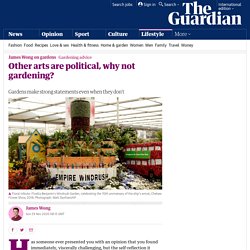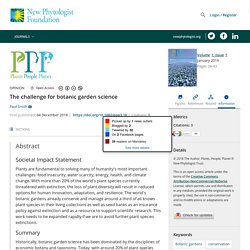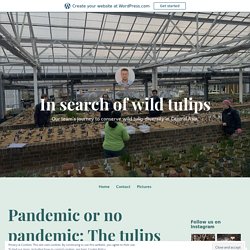Hort/Ag
> Flannerm
> Herbaria
Alice in Gardenland. I started this post a while back following a a visit to Christ Church for the Gardens Trust conference in Oxford in September 2019.

My kind of scholarship: Mark Laird, historic landscape consultant and historian of landscape architecture, takes historical gardening plans (like this one by Lady Elizabeth Lee) and reconstructs what the gardens looked like. RHS Lindley Library – Digital collections. The Gardener's Assistant by Robert Thompson (1859) “If a gardener were limited to the choice of only one implement, that which he would retain as the most useful, would be the spade” Robert Thompson was the first Curator of Fruit at the Royal Horticultural Society’s Chiswick garden.

His extremely popular gardening manual, The Gardener’s Assistant (1859) drew on the practical experience and scientific knowledge he had gained in this role, covering everything from fruit growing to gardening tools. Despite its formal and authoritative tone, Thompson’s manual offered sound advice whether you were Head Gardener on a large estate or a private gardener with more modest ambitions.
George London: designer of dreams. Who was he?

One of the most influential nurserymen and garden designers of the late seventeenth and early eighteenth centuries. Why is he famous? George London founded the acclaimed Brompton Park Nursery in 1689 with his former apprentice and later business partner, Henry Wise.
Somerset. Other arts are political, why not gardening?
Has someone ever presented you with an opinion that you found immediately, viscerally challenging, but the self-reflection it caused was incredibly valuable?

I thought I’d share one such moment from my gardening life. It would be fascinating to hear your reaction. About five years ago, I was admiring one of my favourite conceptual gardens at the Hampton Court flower show.
Sego Supreme: Pathway to Cultivation. The anthropocentric process of introducing new, economically useful plants showcases the interdependence of plants and civilization.

Arboreta, botanical gardens, and like institutions can build on this interdependence to introduce plants that benefit humanity. An ever-increasing interest in the work of ornamental plant breeding and selection, and an increasing demand for wild plant genetics to ameliorate those already in cultivation, is opening new venues for legitimate plant introduction activities.
RHS Lindley Library – Digital collections. Gardening in towns and cities, now and then The challenges we face in gardening in our towns and cities today are not dissimilar to those of Thomas Fairchild’s time, who lived 300 years ago. 86 percent of us now live in towns and cities, where flats are one of most common types of housing.

More than half of all London’s housing stock is flats. These densely populated neighbourhoods mean fewer, smaller gardens with less access to natural light. Across the UK today, 1 in 8 households do not have access to a garden. Our towns and cities also suffer from poor air quality.
The challenge for botanic garden science - Smith - 2019. At last summer's International Botanical Congress in Shenzhen, China, I was delighted to be invited to attend an evening event launching this journal Plants, People, Planet.

The evening was enlivened by a debate among the guests about whether this new journal would cut itself loose from the “tyranny” of citation indices and impact factors and instead aim for societal impact by seeking contributions from practitioners—for instance, people actually conserving and managing plant diversity in the landscape. My own organization's position on this is clear. Botanic Gardens Conservation International (BGCI, www.bgci.org) believes that the biggest challenge facing society that botanic gardens are equipped to address is the loss of plant diversity.
Pandemic or no pandemic: The tulips will grow – In search of wild tulips. As we enter the days of late autumnal sun, and lockdown drags on here in the U.K. and in many countries around the world, the tulip season creeps up on us once again.

Although many things in the future remain uncertain, including whether our fieldwork will take place in the spring of next year, one thing is for sure: The tulip bulbs are preparing to emerge for another season in flowerbeds, grasslands, and steppes around the globe. So, although seeing these wonderful flowers blooming in the wild once again may just be a distant hope, we know they will be there for years to come.
2012 July Book of the Month. By Summer Roses by Crispijn van de Passe Hortus Floridus Arnhem and Utrecht, 1614-1616.

PHAIDRA – Digital collections. The gallery contains unbound photographs and albums of Padua’s Botanical Garden and of other botanical gardens, gardens and places of botanical significance.

The largest part of the collection is devoted to Padua’s Botanical Garden with a collection of 188 items, including photos, photomechanical reproductions and postcards produced between 1880 and 1992. The history of the oldest university botanical garden is recounted from the perspective of the location, the botanical institution, the library and portraits of the gardeners and teachers at work. We also have specific images dedicated to the most important plant species, such as the de Goethe palm, the plane tree and the cable chaste tree – no longer present but certainly then the oldest, (o:4738 e o:4955). The autographs on the postcards, some of which were addressed to the garden’s Prefetti Saccardo and Gola, include the autographs of botanists Alexander Trotter and Paolo Enriques.
Browse Collection »All collections »
□Day 2 of #NationalGardeningWeek and who better to visit than @TheBotanics for a viewing of the amazing collection of #rhododendrons across its 4 gardens @BenmoreBotGdn @Dawyck @LoganBotanicGdn #DiscoverScottishGardens #VirtualGardens #VirtualSpring. 8 of the Best Botanical Gardens in the World. From the Royal Botanic Gardens in England to the Jardim Botânico in Rio de Janeiro, here are some of the top botanical gardens across the globe—including some you can visit from home. share this article Northern Hemisphere or Southern, east or west, there’s always something in bloom at the best botanical gardens in the world. The astonishing variety of flora on display offers an escape for nature lovers and inspiration for aspiring green thumbs.
And although most of these top botanical gardens are temporarily closed as part of the global effort to contain the spread of COVID-19, some are offering virtual tours online—and all are dreamy ideas for when you can hit the road again.
The Marvelous Experiments of Amateur Plant Breeders. Maybe you’re spending some time gardening lately—more than you might be used to. If you really want to take it up a notch, you might follow in the footsteps of the twentieth-century hobbyists described by historian Helen Anne Curry. These gardeners were amateur biologists who developed experimental techniques in their own backyards. In the 1890s, Curry writes, horticulturalist Luther Burbank introduced hybrid fruits and flowers to California gardeners.
Some of those gardeners saw an opportunity to try their own hands at developing new hybrids. By the early twentieth century, magazine articles urged readers to try “burbanking” plants for themselves.
Sitelines spring20. The charm – and artifice – of the English cottage garden. The confusion is understandable. You arrive at Anne Hathaway’s Cottage in Stratford-upon-Avon, keen to experience the quintessential cottage garden — only to be told that Shakespeare’s garden was, in fact, designed in the 1920s.
The space in front of an Elizabethan cottage would have been used for keeping pigs or hens, with a patch for cabbages or onions. Any flowers or herbs would have had medicinal or practical uses, not least for strewing on the cottage floor to disguise the stench.
Rhododendron Species Botanical Garden – Federal Way, Washington. The Rhododendron Species Botanical Garden (RSBG) is unusual for many reasons, including its unassuming address. Federal Way is a suburb nestled between Seattle and Tacoma, best known for its strip malls and horrific traffic.
It’s not somewhere you’d expect to find a botanical garden—let alone a sprawling, 22-acre oasis teeming with rare plants. In the 1970s, the Rhododendron Species Foundation was allotted a plot of land on the 400-acre wooded campus where a large logging company maintained its headquarters. What began as a small space for the foundation to house its burgeoning collection would later come to blossom into the world’s largest collection of rhododendrons. Rhododendrons are a genus of flowering plants that show stunning variety in their flower shape, color, and growth habits.
Sibbaldia: the Journal of Botanic Garden Horticulture. A catalogue of American trees and shrubs that will endure the climate of England – John Johnson Collection: now and then. The Art of Advertising exhibition. Blog post 2 A catalogue of American trees and shrubs that will endure the climate of England, Christopher Gray, Fulham, [c. 1737] The second item in our Printing case exemplifies copper engraving and etching, and is accompanied by the following description of the process: In copper engraving and etching the print is taken from hollowed-out marks on a copper plate.
These marks were inscribed through a coating that resists acid, and then subjected to etching, or physically engraved into the copper with a tool known as a burin.
International Code of Nomenclature for Cultivated Plants. The First School Gardens. School gardens are a national phenomenon, but they were also a major part of U.S. culture from the 1890s to the 1920s. The plots weren’t just about flowers, fruits, and vegetables, either.
Why Cultivated Plants Matter in an Urban Environment. The Northern Lads: The Migration of Scottish Gardeners with Especial Reference to the Royal Botanic Gardens, Kew. The PDF file you selected should load here if your Web browser has a PDF reader plug-in installed (for example, a recent version of Adobe Acrobat Reader).
If you would like more information about how to print, save, and work with PDFs, Highwire Press provides a helpful Frequently Asked Questions about PDFs.
RHS: Growing society and changing lives. Can botanic gardens save all plants?
Nomenclature of Cultivated Plants. Fagel Collection: Trinity College, Dublin. Lobb Brothers: Collected for Veitch. Opening-up Crépin’s Rose Herbarium by New Technologies: a Pilot Project.
Gardening for Science. Botanizing America. The changing role of ornamental horticulture in alien plant invasions - van Kleunen - 2018 - Biological Reviews. View RHS Library Collections online. Sibbaldia: the Journal of Botanic Garden Horticulture. Smithsonian Libraries. Plant Heritage - National Collections Scheme, UK Garden Plants. Plant Heritage - National Collections Scheme, UK Garden Plants. 50 Most Amazing University Botanical Gardens and Arboretums in the U.S.
10 Vertical Gardens That Bring Greenery to Boring Walls. Vertical gardens have become much more popular as it seems that horizontal space has been growing smaller and smaller.
Living walls can exist both indoors and out making them a great yet unconventional design option for your walls. They not only bring a natural element to a space, but they can easily become works of art in their own right. Plus, they help purify the air we breathe, so it seems like a win-win, right? Take a look at ten walls that have been turned into live vertical gardens for everyone’s viewing pleasure. Photo courtesy of Patrick Blanc L’Oasis D’Aboukir is a project by Patrick Blanc in Paris, France where the side of a historic building becomes a mesmerizing vertical garden covered in 7,600 plants from 237 different species. Photo by Grupo Habita Located in Mexico City, Downtown Mexico is a boutique hotel designed by Cherem Serrano Arquitectos with an inner courtyard that features this massive living wall. Photo by Kinan Mansour Photo by Héctor Armanado Herrera. Mr Barr's bulbs: the catalogues of the 'Daffodil King'
Its place as a favourite in our gardens has much to do with nursery owner Peter Barr (1826-1909), whose passion for collecting, cultivating and supplying daffodils in the late nineteenth century earned him the nick-name ‘The Daffodil King’.
“A genial, sprightly Scotchman, who wears a Tam O’Shanter cap” is how Peter Barr is described in an issue of the Gardeners’ Chronicle from 1901.
The Archibald Archive. The World's Oldest Botanical Gardens. Moss Garden in Berlin. Geneva BG. Le jardin botanique de la Villa Thuret d'Antibes. RHS at Wisley: Sorbus 'Joseph Rock'
BG in Kazakhstan. Pha Tad Ke BG, first in Laos. The man who saved Botanic Gardens, Singapore News. Impact of BG on Korean DMZ. College of Pharmacy at URI. NYBG: The Life of a Labeler. LibGuides at NYBG. Beatrix Farrand at Mt. Desert Island. The Polly Hill Arboretum. As it's #BlackBotanistsWeek I wanted to share this clip again of the wonderful Sebsebe Demissew, Foreign Member of @royalsociety and @kewgardens medallist, Keeper of the Nat Herbarium of Ethiopia, and founding Fellow of Ethiopian Academy of Science.
Oxford Botanic Garden and Arboretum, Oxford, United Kingdom.
Evolving Role of BGs. Measuring success of bgs. Role of BGs in 21c. How bgs can win hearts and mindsTED. BGs 'best hope' for saving endangered plants. BG Conservation International. Botanic Gardens and Agricultural Education. R‐E‐S‐P‐E‐C‐T: How Royal Botanic Gardens Victoria is responding to climate change - Entwisle - - PLANTS, PEOPLE, PLANET - Wiley Online Library. Perfecting the Garden. Garden Stories: A Celebration of Gardening.
Garden Stories - an album on Flickr. Antique Seed Catalogs and Heirloom Gardening. Cornell: Mail Order Gardens. Backhouse Nursery and RBGE. Horticultural Historical Research. How Daffodils Reveal Historic Building Foundations. Kate Sessions: A Legacy of Botanical Bounty by The Huntington. The Top 10 ‘first’ botanic gardens (Plant Portrait XVIII*)
Seeds in the Stacks: A Closer Look at Two Seedsmen from the Golden Age – Biodiversity Heritage Library.










